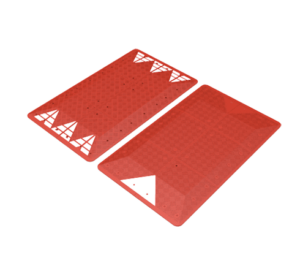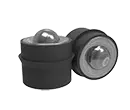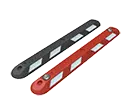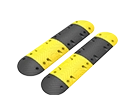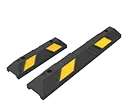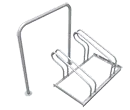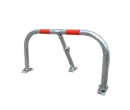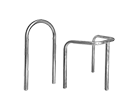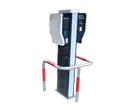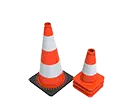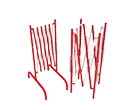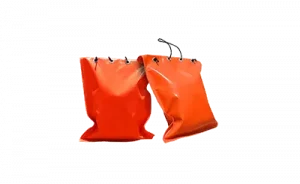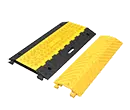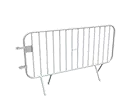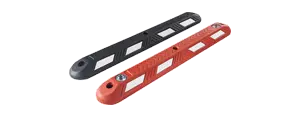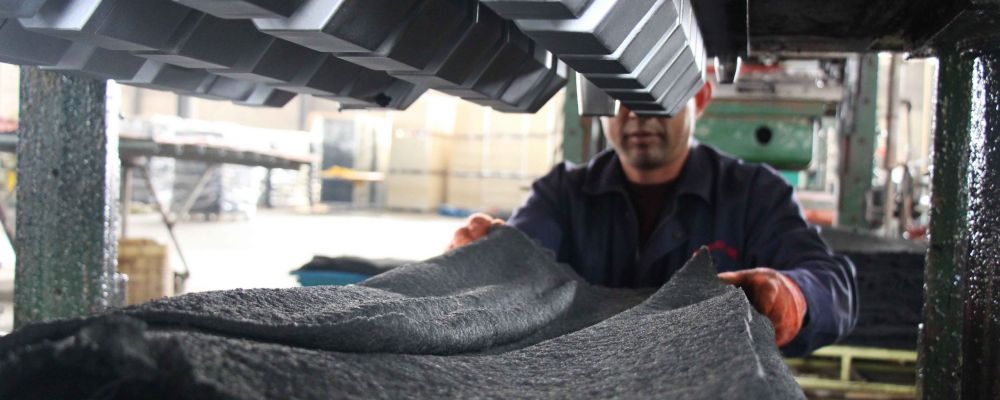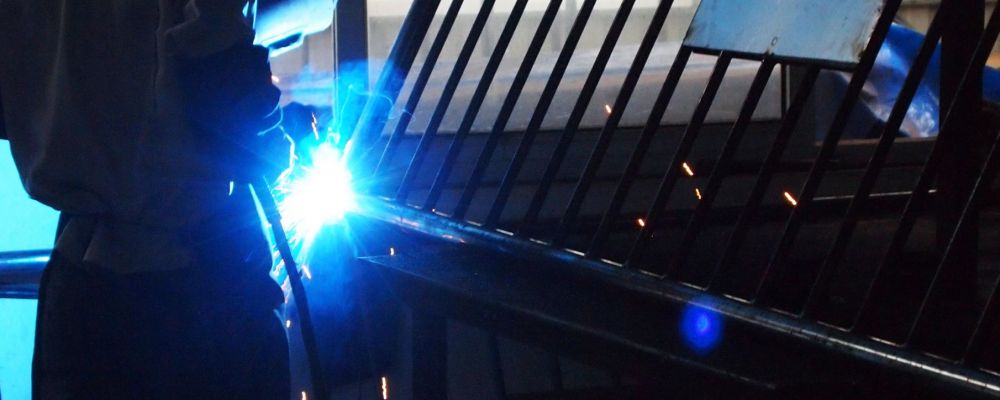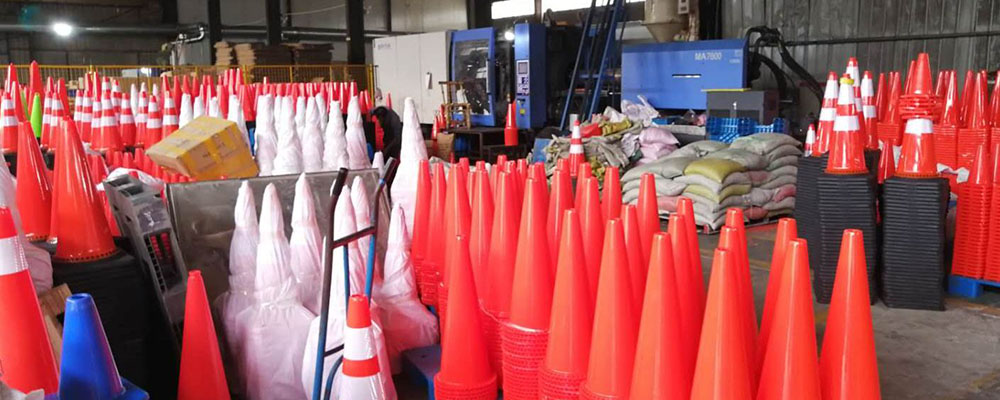Benefits of black and yellow lane dividers!
Due to the rise in bicycling culture, there has been a growing need to implement bicycle safety measures. If you are an avid cyclist, you must be aware that lane dividers are suitable safety protocols for cyclists.
Different types of lane dividers are basically any marking or barrier that creates separate bike lanes for cyclists. However, one thing that is essential to consider for lane dividers is the colour combination of the lane separator structure.
If the colour is not bright, what is the point of installing them if cyclists and motorists cannot spot them and drive carefully? There are different colours of lane dividers, but the black and yellow combination is globally accepted and popular.
Let’s see what makes these black and yellow lane dividers popular for delineation.
Do you want to know more about this topic? We also have an article talking about different types of lane dividers.
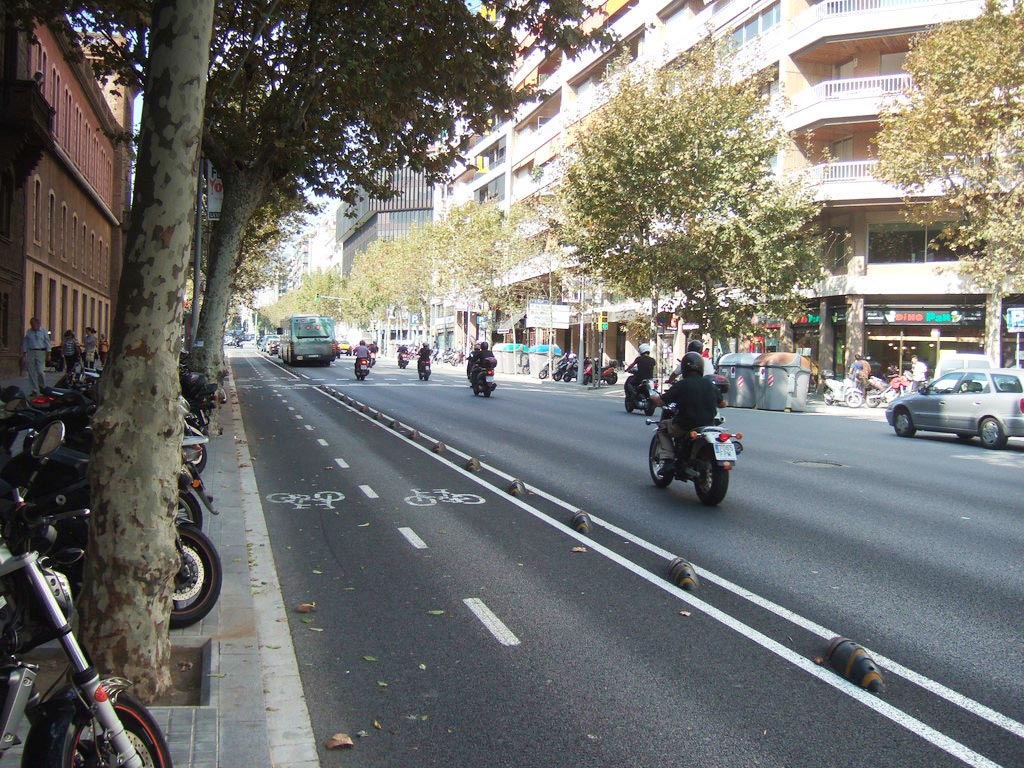
Pros of black and yellow lane dividers
Black and yellow lane dividers are popular because they can increase the visibility of bike lanes in dark areas such as parking spaces and underground passages. Yellow and black are flashing colours and can illuminate in any dark setting.
Moreover, the yellow and black colours are approved by authorities such as MUTCD, the Department of Transportation, and the Federal Highway Administration.
Even road markings use the black and yellow combination to delineate the traffic and make motorists aware of separate cycle tracks.
Many of these lane dividers are wrapped with yellow reflective tape, reflecting the light beam at high intensity and making it easy for vehicles to spot in dark weather such as fog and the rainy season.
If the colour is not reflective and shiny enough, many motorists may fail to spot these lane separators on roadways. As a result, there is a high risk of hitting the lane separators, which may cause wear and tear to the vehicles.
Installing these lane separators ensures that pedestrians and cyclists are safe from collisions and crashes because drivers must obey the traffic laws and avoid trespassing in the bike lanes.
Furthermore, having clear lane dividers ensures less traffic congestion because the separate lanes streamline the traffic.
Moreover, some lane dividers have retroreflective glass beads. Glass beads are naturally transparent, which increases their visibility. They can reflect more light to the headlight beam to the driver, making the spotting of lane separators easier.
Nonetheless, a black and yellow lane divider separates specific lanes for bicyclists, ensuring that they are visible from a long distance, reducing accidents between cyclists and other motor vehicles.
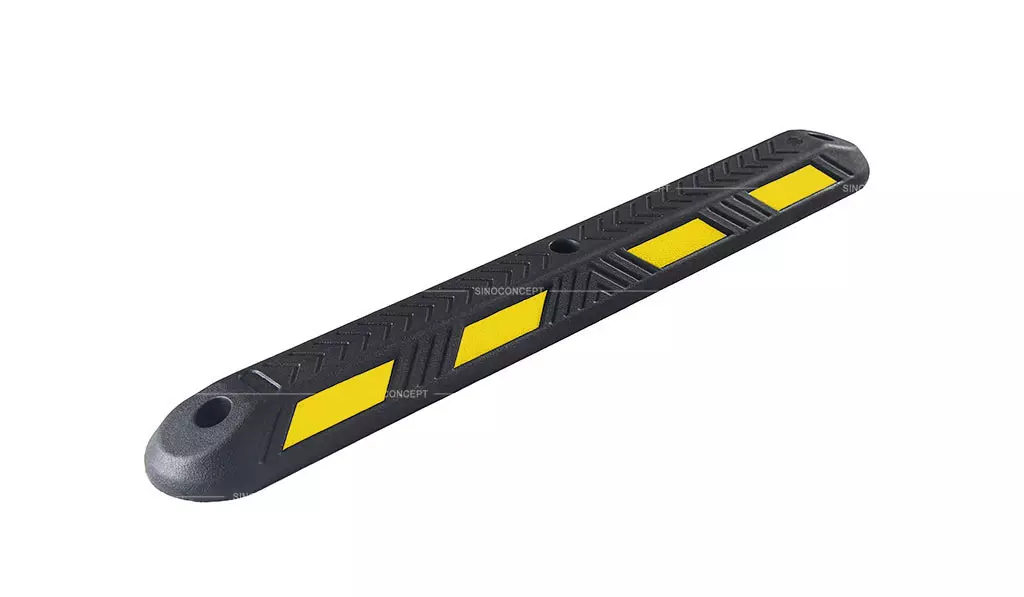
Other colour combinations
Yellow and black are traditional colour combinations for lane dividers. However, the time has changed, and new colour combinations have been introduced and implemented.
Some of the increasingly popular choices include:
- Red and white
- Black and white
You might be surprised to see a combination of red and white, but it is the most reflective combo out there. Red, being a good flashing colour, can be witnessed by drivers, cyclists, and pedestrians in any weather situation. Even in darkness, you can easily spot an orange-red colour.
Similarly, white is quite reflective in night and dark times. Therefore, if you’re riding on a dark forest road, you can easily spot a red-and-white lane divider from miles away.
Plus, most companies that sell red and white lane dividers attach white reflective strips to the separator’s structure. These white strips are reflective and shiny, making them a suitable traffic control device for cyclists.
On the other hand, black and white is another popular colour combination. Such a combination works in all weather and environment. During the day, the black colour can work, while the white stripes can come in handy during night-time.
Moreover, the installation process is also simple. Three fixing bolts can help you manually install these lane dividers on roads. You can cover up to 100 metres of a bike lane in a single day.
Most of these lane dividers can also have road studs embedded within their structure. Road studs are kinds of lamps that can illuminate dark surroundings. Therefore, any motorist can spot them from miles ahead and drive carefully.
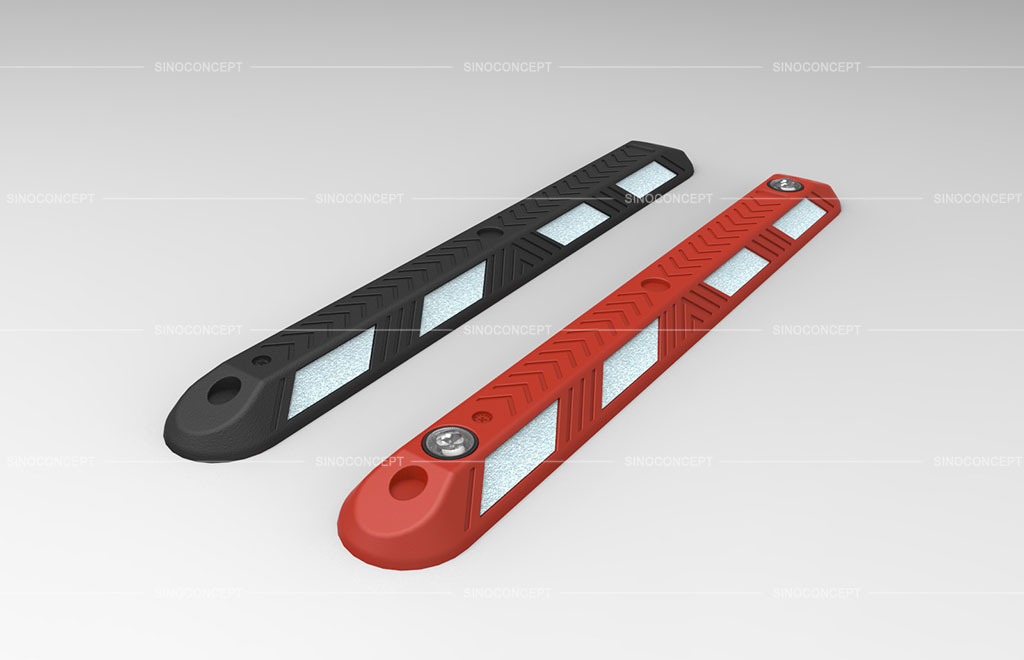
Do all lane dividers have visible colour?
Lane dividers differ in their material composition, shape, and colour. Since materials can have varying properties, the colour tolerance of each material for lane dividers is different.
Some of the most popular materials for manufacturing lane dividers include:
- Plastic
- Concrete
- Rubber
Plastic is the most cost-effective material for manufacturing lane dividers. A thermoplastic lane divider can accommodate any type of colour combination on its structure.
Plus, the structure of plastic lane dividers is durable and can last for an adequate time. However, the colour is painted, so it is highly likely to wear out.
Concrete or asphalt lane dividers are great for heavy strength, making them suitable to withstand multiple collisions from other motor vehicles. However, many concrete lane dividers have a natural paint of grey, which is not very reflective.
Therefore, many vehicles cannot spot them in dark areas, making them susceptible to accidents. While you can paint them yellow or some other colour, it’ll not be permanent and will wear out in some time, i.e., 5-6 years.
Rubber is quite a great product for adapting to different colour combinations. If you dye the colour in the rubber mass, it’s possible to have a long-lasting permanent colour.
The dyeing process enables the colour to submerge within the rubber material, making it permanent. However, the paint can surely fade away if it’s not dyed.
Steel is another uncommon material for lane dividers. It’s relevant in creating railroad railings for delineation. They are also common for delineating a two-way traffic lane on highways or freeways.
While it’s a sturdy material, it is not common in commercial and residential areas.

Alternative tools for lane delineation
Besides lane dividers, there are some popular traditional tools for delineation. Some of them include the following:
- Delineation guideposts
- Signages
Many lane dividers can have a guidepost inserted within them, which is around 700 mm tall. The guidepost has reflective films and retroreflective colours like yellow and orange, making them spot easier.
They are a type of bollards that can warn motorists about separate lanes for cyclists. Such guideposts can also come in handy for two-way traffic lanes, intersections, and roundabouts.
Therefore, using them on the roadways can caution motorists about lane separators, reducing the risk of hazardous accidents.
Signages are a type of traffic control device that can indicate to motorists about the different road lanes, improving traffic safety. Traffic control signs can include stop signs, stop lines, and road signs that can indicate separate bike lanes on the roads ahead.
As a result, drivers will drive carefully and avoid trespassing in a separate bike lane.
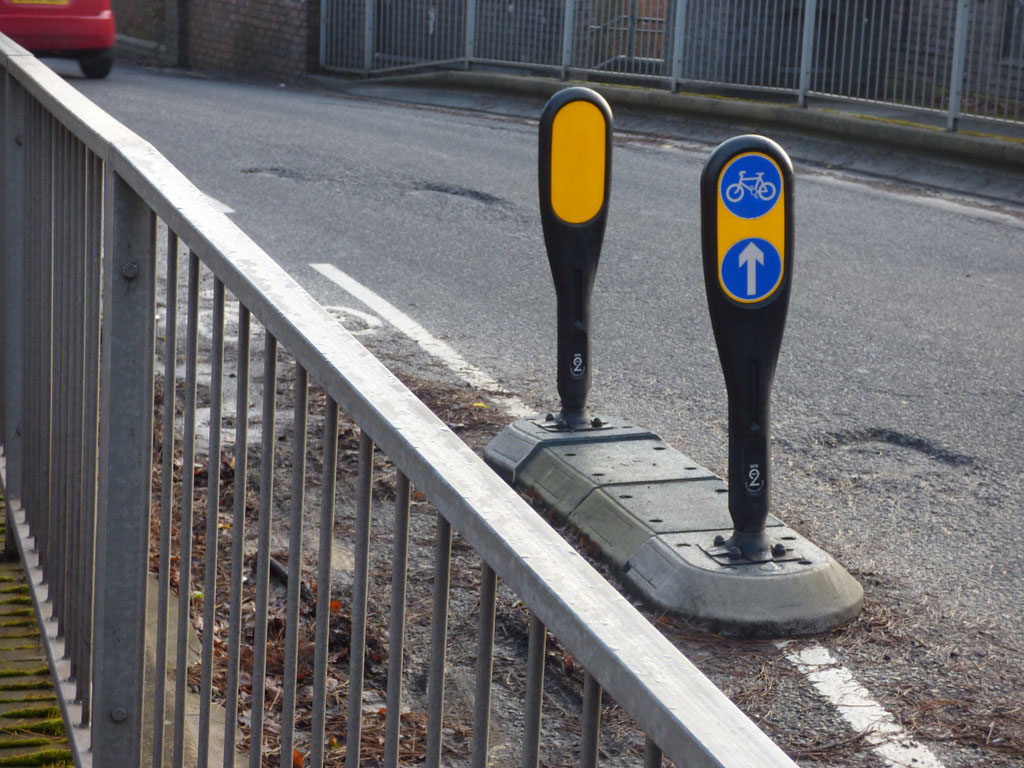
The usefulness of pavement markings
Road markings are the most traditional way of creating separate bike lanes. Pavement markings are also essential because they can inform drivers about roadway alignment, traffic signs, crosswalks, sidewalks, and driving instructions.
Plus, there are traffic laws regarding the purpose of different lane markings, which everyone must obey.
Pavement markings include creating painted lines on the roads. There are different types and colours of pavement markings, and all of them can have different purposes.
Following are some of the most popular ones:
- Solid white lines: A white marking separates vehicles going in the same direction. A solid white line indicates that the driver must not change lanes unless extremely necessary.
Similarly, white dashed lines represent that motorist can change their lanes without facing any fines.
However, changing lanes in a double white line is strictly avoided because they indicate a barrier.
- Solid yellow lines: A lane marked in yellow indicates traffic separation in opposite directions. Likewise, you have prohibited lanes if there are double yellow lines.
However, a dotted line indicated in yellow allows motorists to change lanes.
All these road signs and markings are essential, even in bike lanes. If you use marking material for separating bike lanes, they will have the same purpose as above.
The only difference is that there is some sort of visual that indicates that the lane ahead is for cyclists.
Moreover, it is important to note that even lane dividers are placed within pavement markings, indicating bike lanes. Therefore, pavement markings are essential to paint/colour for cyclists’ safety
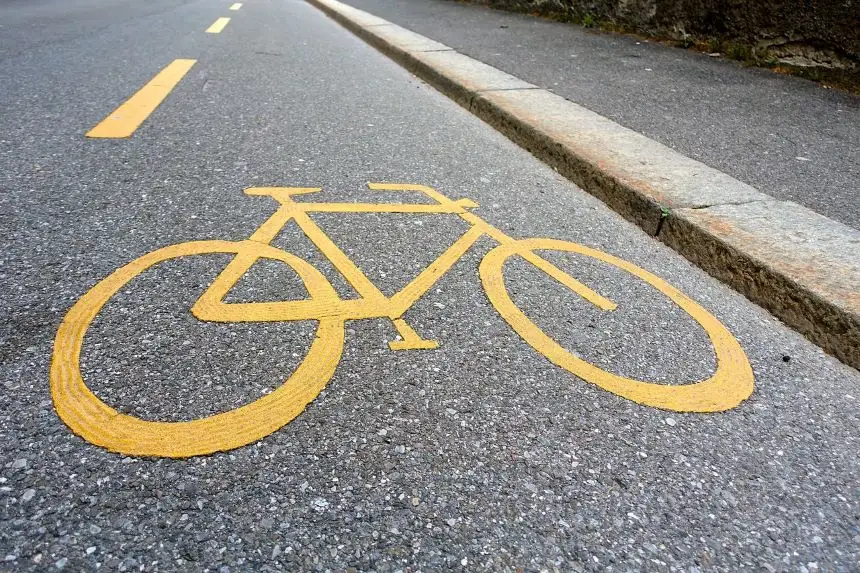
Conclusion
Colour combinations play an essential role in increasing the visibility of separate lanes for cyclists on the roads. Therefore, they are an extremely important consideration when purchasing sets of lane dividers for your city streets or jurisdictions.
Do you have clear safety measures in place to improve cyclists’ safety? Are you planning to mark painted lanes to delineate lanes for cyclists? Purchasing high-quality and long-lasting lane dividers can help you in achieving your goal.
Sino Concept has red and white lane separators with reflective films. We can even change colours upon request. Plus, we even have other traffic calming measures to increase safety in your area. Reach out to us on our website for ordering lane separators.
To learn more, we advise you to refer to the following pages:

